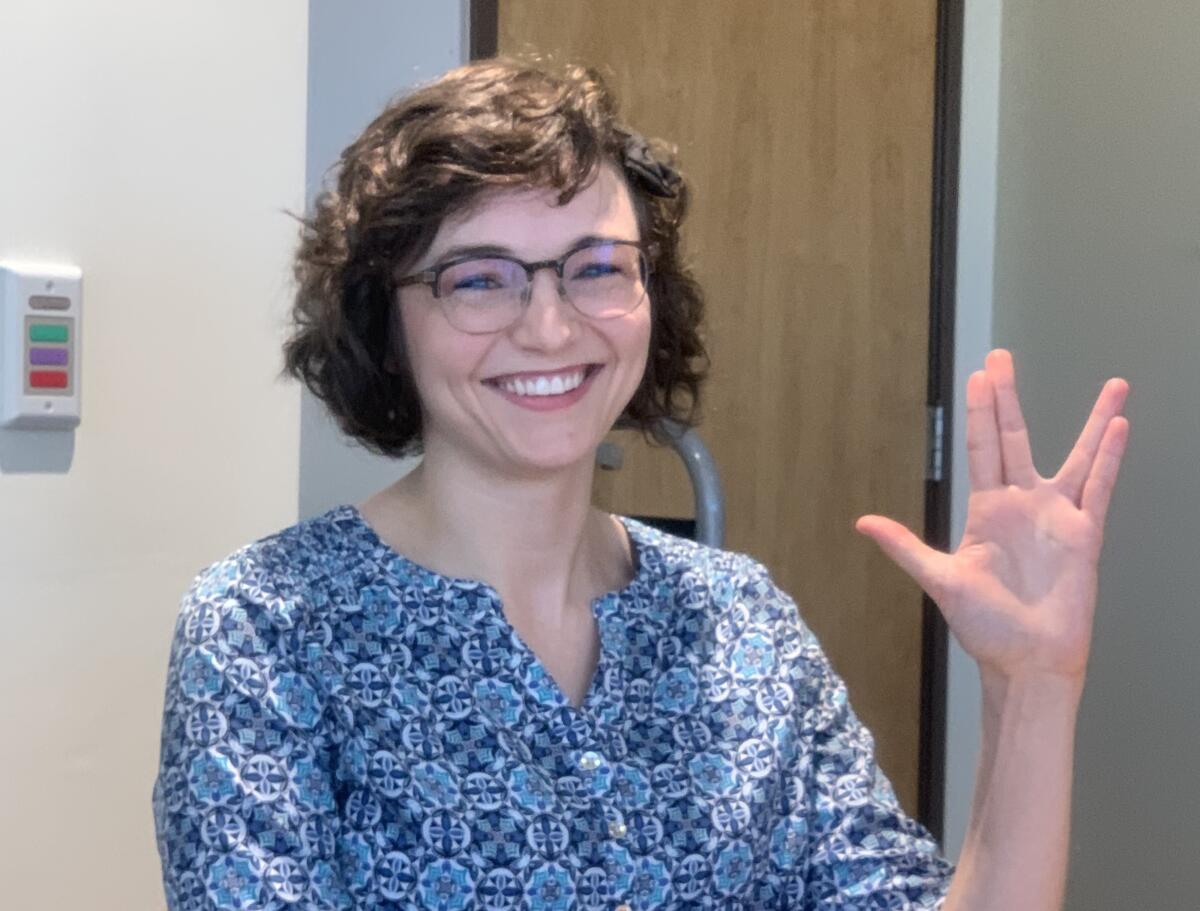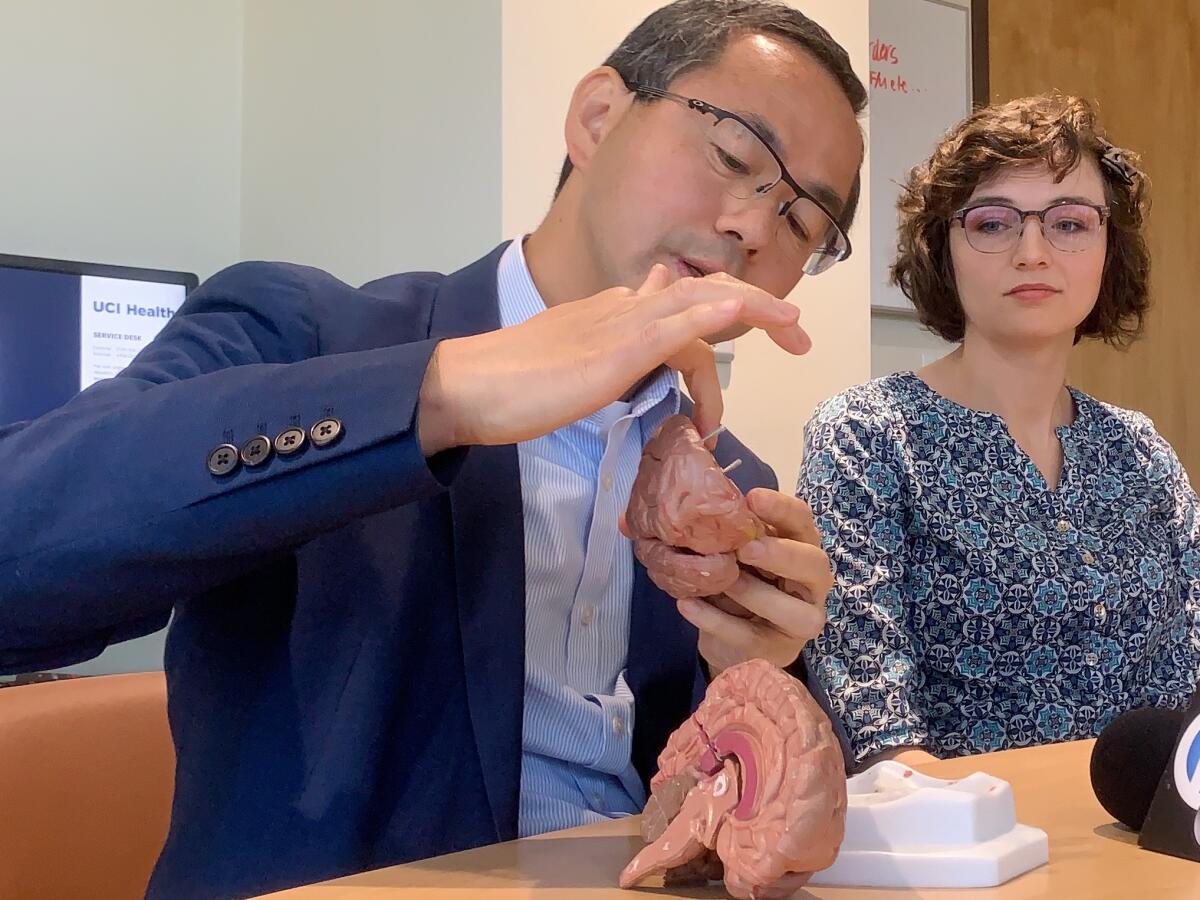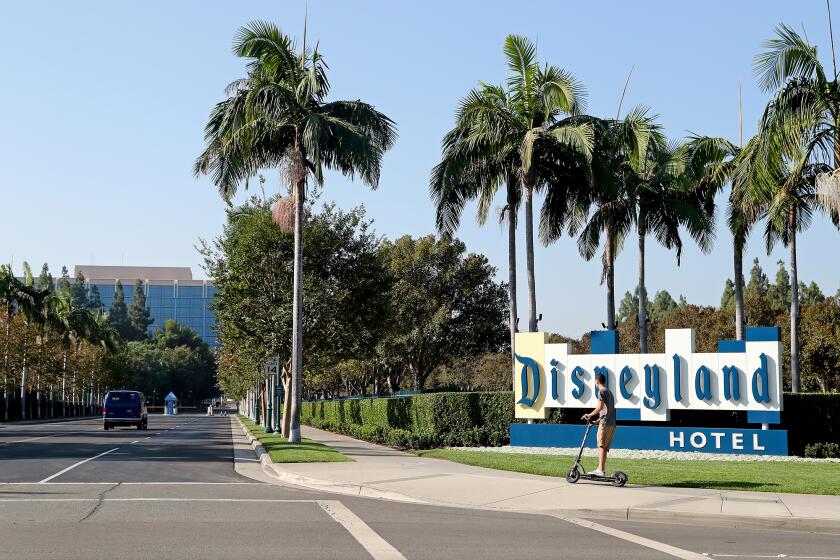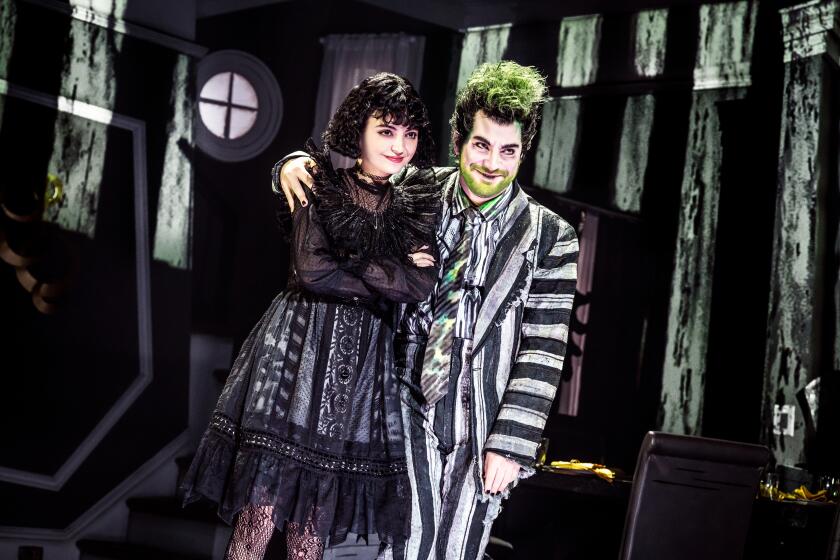A young woman can now live long and prosper, after brain surgery cures her of seizures

Dressed in jeans, a printed top and black flats, Jasmine Williams looks like any 26-year-old.
But up until a year ago, she suffered12 to 100 seizures a day.
Not anymore. At a July 15 press conference, she appeared radiant as she explained how, thanks to Dr. Jack Lin, the director of the UC Irvine Comprehensive Epilepsy Program in Orange, she is now seizure-free.
The difficulty started at age 8. She was in fourth grade and at times would zone out or uncontrollably raise an arm — common symptoms of complex, partial seizures.
A neurologist initially failed to diagnose Williams’ epilepsy. He thought she was developing tics. Her mom, Pam Williams, a nurse, thought otherwise.
After the right diagnosis, the treatments began.
For nearly two decades, the Corona resident took a variety of drugs — one required ingesting 15 tablets a day — to control her epilepsy. However, the medications failed to eliminate the seizures and caused a host of side effects, including exhaustion, depression and dizziness.
But the medications helped shift the seizures to nighttime and Williams learned to drive. She earned a teaching credential at Cal State San Bernardino.
But, because of recurrent debilitating symptoms, she could only work as a substitute teacher and eventually had to give up driving.
A referral led Williams to Lin’s clinic. He suspected that her seizures were based in the supplementary motor area of the brain.
To pinpoint the exact location, Lin performed two extensive surgical evaluations to map her brain. He inserted 18 probes, with 10 to12 electrodes each, into Williams’ skull.
“Basically, my head was a golf course,” Williams joked.
After the evaluation, Williams learned she could have part of her frontal lobe removed with a 50% chance of eliminating the seizures, but there was also a risk that she could lose strength and ability in one of her legs.
The alternative was simply to insert a responsive neurostimulation device that would essentially zap the seizures when they occurred. But the likelihood that Williams would continue experience seizures was very high.
“That was the easiest decision I had to make,” she said.
Hours after the June 5, 2018 surgery, Williams felt better than expected. She touched her thumb to each finger and performed simple tasks.
Then her mom asked her daughter, a “Star Trek: The Next Generation” fan, to flash the “Live Long and Prosper” gesture. She couldn’t, but a day later she could.
In the year since her final surgery, Williams has turned increasingly optimistic and decreased her reliance on medication.
In the fall, Williams will begin a new job as a first-grade teacher in Chino Hills. After years of relying on her mother for transportation, Williams will be able to make the commute on her own.
Williams is also participating in 27 brain studies to to help doctors understand memory and potentially treat neurological diseases, such as Alzheimer’s.

At the press conference, Williams beamed, watching Lin speak about the surgery that changed her life. However, to Lin’s 11-year-old daughter, Williams is the hero of this story.
After meeting Williams, his daughter declared, “I don’t want to be a doctor. I want to be a teacher!”
All the latest on Orange County from Orange County.
Get our free TimesOC newsletter.
You may occasionally receive promotional content from the Daily Pilot.



